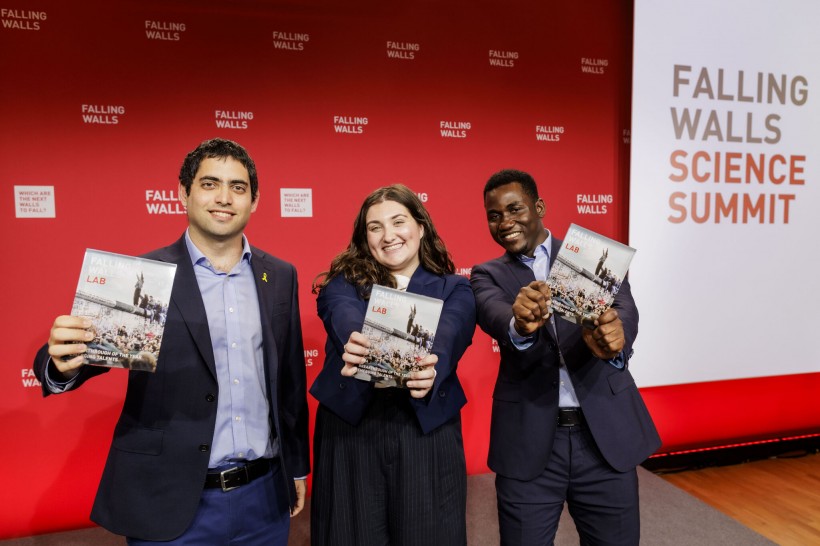Fresh off her big win at an international science contest, Dalhousie University student Dina Rogers is aiming to transform our relationship with plastic with a novel method of deconstructing waste, allowing plastic constituents to be re-used.
Earlier this month, Rogers won Science Breakthrough of the Year in the Emerging Talents category at the Falling Walls Competition in Berlin. Now back home in Halifax, her pockets full of “business cards and pamphlets”, she is celebrating interest from scientists and potential partners and investors, while stressing there is still work to be done before her idea can be commercialized.
The prize-winning method combines a plastic-degrading bacteria called PETase with a protein in mushrooms to create a sticky fused protein that clings to plastic and consumes it; a process Rogers illustrates with reference to Pac-Man, the munching figure in the classic arcade game.
Other scientists have done, and are doing, similar work with PETase, but Rogers believes she and her supervisor Dr. David Langelaan are the only ones to combine PETase with the mushroom protein.
“Ideally, we will be able to scale the method in a way that is very affordable to people around the world,” Rogers, an MSc student in Biochemistry and Molecular Biology and a Killam Predoctoral Scholar, told Entrevestor.
She said her immediate focus is on patenting the method. Her process breaks down plastics, leaving the compounds in solution. Next, she must find a way to remove the compounds from solution and repolymerize them to make new plastics or use them in some other way, such as in making textiles.
She can’t say exactly how long the next steps and scaling might take.
“Everything has moved so fast. The process only showed signs of working in July, and two months later I won the first Falling Walls.” (The regional contest that allowed her to enter the global competition.)
“In science, you are often one corner away from the process falling apart and one corner away from it becoming the gold standard.”
She said the win has changed her life. In her free time, she is a first responder with the St. John Ambulance. This commitment to the common good and her prize-winning process, with its focus on sustainability, have made her realize she may not spend her life in a research lab. She is from a family of business people, and potential commercialization is appealing.
“Our process is carried out at ambient temperature with naturally occurring substances,” she said. “Falling Walls gave me eye-opening experiences and made me realize that business could be an interesting and viable career path.”
She said winning in Berlin against 99 other excellent young scientists in front of some of the best scientists in the world, including Nobel prize winners, was “surreal”. She looks forward to returning as a jury member next year.
Rogers credits her supervisor, the Dal Innovates team, and her pitching coach Permjot Valia with the win.
“Permjot made me realize you can have a great idea, but if you can’t communicate it to someone outside your sphere, it’s not worth a lot. He helped me rework my pitch and put it in an international context,” she said.
“In Berlin, Dr. Alice Aiken (Dal’s vice president research and innovation) and Dr. Geneviève Tanguay (vice-conseillère scientifique en chef du Canada) were my biggest supporters.”
This is the second year in a row that a Dalhousie student has taken the top prize in the Falling Walls Lab Pitches contest. Last year's winner was Joseph Bedard’s pitch on constructing plastic out of nitrogen and phosphorus.








